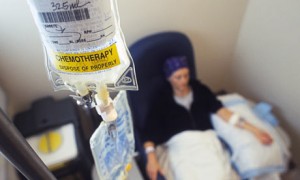8 Things the 80% Pediatric Cancer Survival Rate Does Not Reveal
 When you look deeper, pediatric cancer statistics can be more alarming than they appear. The Wall Street Journal has reported that even though the overall pediatric cancer survival rate has risen significantly over the years, approximately 95% of children who become adult survivors suffer from at least one chronic health condition by the time they are 45 years of age. The treatments that save young patients’ lives can inadvertently cause long-term damage to a wide variety of body functions and inhibit healthy growth and development. These result years later in what are known as “late effects” of cancer treatment. Here are eight common late effects of pediatric cancer treatment:
When you look deeper, pediatric cancer statistics can be more alarming than they appear. The Wall Street Journal has reported that even though the overall pediatric cancer survival rate has risen significantly over the years, approximately 95% of children who become adult survivors suffer from at least one chronic health condition by the time they are 45 years of age. The treatments that save young patients’ lives can inadvertently cause long-term damage to a wide variety of body functions and inhibit healthy growth and development. These result years later in what are known as “late effects” of cancer treatment. Here are eight common late effects of pediatric cancer treatment:
1. Delayed or diminished growth
Radiation treatment in childhood has been shown in cancer statistics to increase the risks for abnormal bone growth later on in life, especially where the radiation was targeted on the body. Chemotherapy also increases the risks for delayed or diminished growth. Some childhood cancer patients go on to develop osteoporosis or scoliosis as adults.
2. Infertility and sexuality issues
Chemotherapy and radiation can damage reproductive organs or the endocrine system (responsible for puberty and hormones) and cause fertility issues for patients later in life. The risks of this late effect can be minimized during treatment by using radiation aprons or banking eggs.
3. Cognitive problems and delays
Statistics for pediatric cancer show that children younger than 5 years of age who undergo cancer treatments are at elevated risks for memory and cognitive disabilities later in life. This is especially true for children who receive radiation on the spine, neck, or head.
4. Organ damage
Cancer statistics from St. Jude Children’s Research Hospital show that patients who receive cancer treatments as children, such as high doses of radiation to the chest area or especially toxic chemotherapy, are likely to have serious organ side effects later in life. In one group followed more than 56% developed cardiac abnormalities and 65% eventually suffered pulmonary issues.
5. Hearing loss
Radiation for cancers of the brain and certain cancer fighting medications have shown long-term side effects, including hearing loss, tinnitus (ringing in the ears), dizziness, and associated loss of balance.
6. Vision problems
Pediatric cancer statistics show that children who receive radiation treatments for cancers of the brain are also more likely to have long-term visual effects, such as blurred vision, early onset glaucoma, and cataracts.
7. Dental problems
Chemotherapy has been shown to have late effects on dental health. Childhood cancer patients are more likely to have tooth decay and gum disease as adults. Those children who are treated with radiation on the head are also more likely to have immature growth or even missing teeth.
8. Secondary cancers
Although cancer statistics and cancer research don’t determine the reason why, pediatric cancer survivors are at a slightly elevated risk of developing a secondary cancer later in life that appears in a new location or of a new origin.
